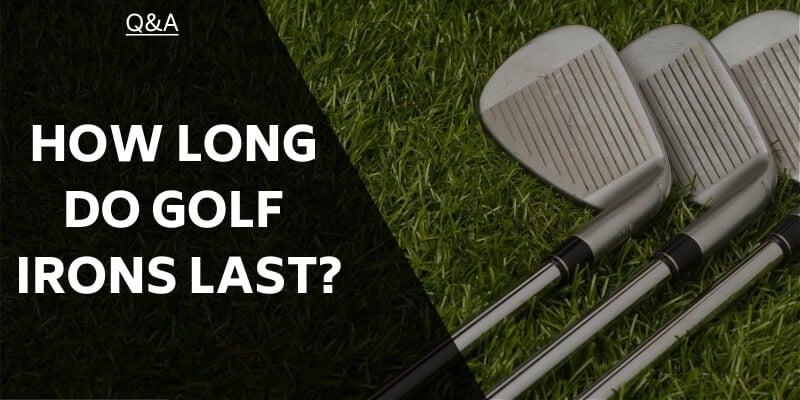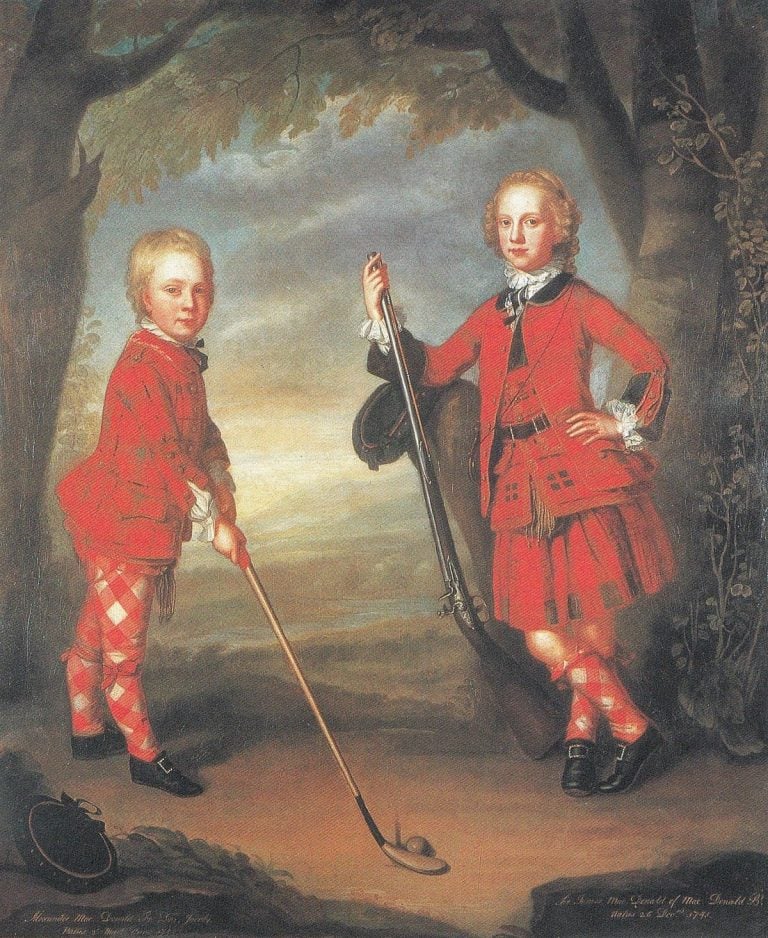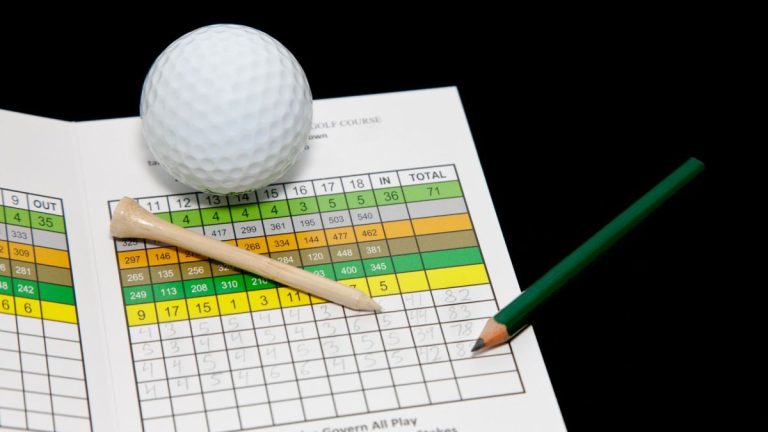How Long Do Golf Clubs Last? Unraveling the Lifespan of Your Precious Equipment
Key Takeaways:
- Golf club lifespan can vary depending on several factors, including frequency of use, maintenance, and technological advancements.
- Different types of golf clubs have different lifespans, with drivers typically lasting around 5-8 years, irons lasting 10-15 years, woods and hybrids lasting 5-8 years, wedges lasting 3-5 years, and putters lasting 10-15 years.
- Signs that it’s time to replace golf clubs include visible wear and damage, loss of performance and consistency, and technological advancements that offer significant improvements in distance and accuracy.
Introduction
Golf clubs have a limited lifespan, like any other sports equipment. How long they last depends on many things. For example, usage, maintenance and quality.
When you hit the ball, the turf, or other surfaces, golf clubs wear and tear over time. Plus, bad weather and wrong storage can also damage them.
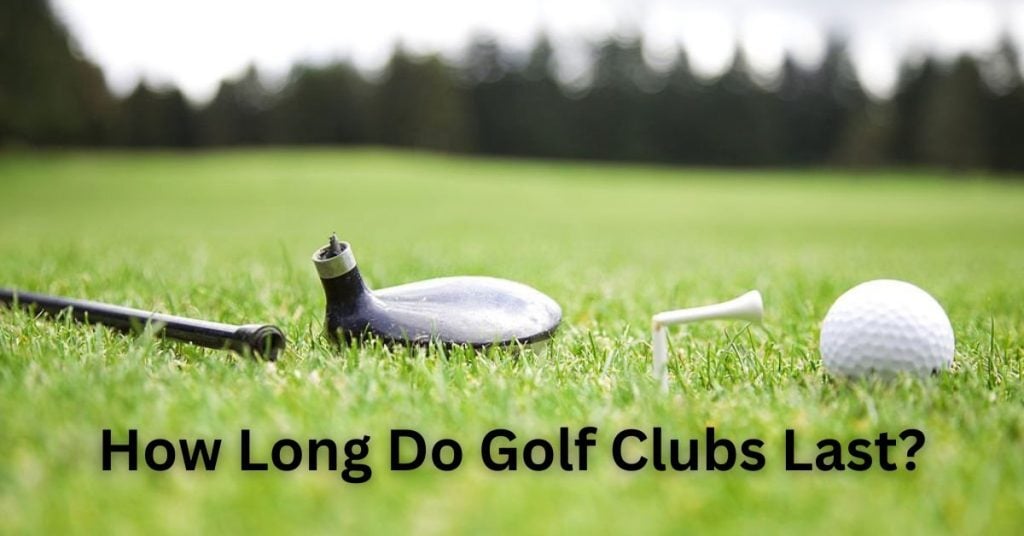
Some golfers change their clubs often, to stay up-to-date with technology or for their changing skills. Others stick to the same set for years.
In the end, the lifespan of golf clubs is individual and can differ greatly.
Lifespan of Golf Clubs
Golf clubs may not last forever, and understanding the factors that affect their lifespan can help you make informed decisions. From the materials used to the frequency of use, various aspects can influence how long your golf clubs will hold up. In this section, we’ll explore the factors affecting the lifespan of golf clubs and delve into the different durations you can expect from various types of clubs. So, let’s dive in and discover how to maximize the longevity of your golf clubs.
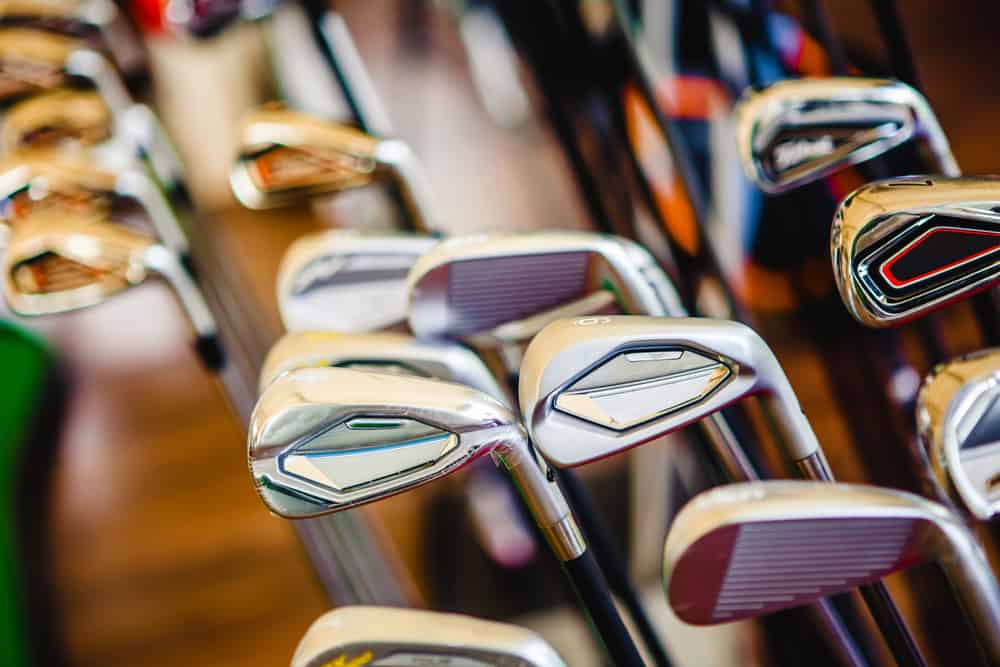
Factors Affecting Lifespan
Golf club lifespan is influenced by many things. These include the materials used in construction, frequency of use, intensity, care taken, and external factors such as weather and storage.
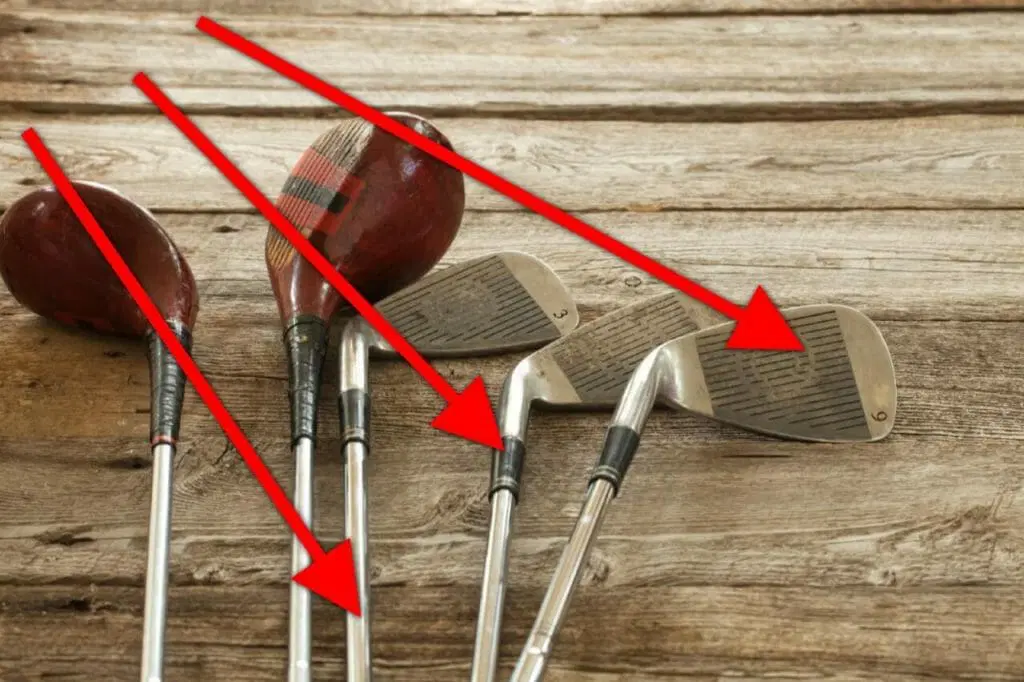
Materials: The quality of materials used in making the clubs impacts their durability and lifespan. High quality materials make them more resistant to wear and tear, lasting longer.
Usage: Regularly using the clubs for lengthy periods or intense swings can lead to wear and tear, shorter lifespan.
Maintenance: Cleaning and maintenance helps extend club life. Cleaning off dirt, debris, and moisture prevents corrosion and damage. Clean them after each use to avoid build-up and performance issues.
Storage: Proper storage of clubs in a dry environment away from extreme temperatures and humidity is key. Protect them with covers or storing them in a bag can prevent scratches or dents.
It’s worth noting that while these are important factors, individual circumstances may vary due to personal usage habits and environment. From drivers to putters, these factors affect club lifespan like fine wine or leftover sandwiches in your golf bag!
Lifespan of Different Types of Clubs
Different types of golf clubs have different lifespans based on usage, maintenance, and technology. Knowing the lifespan of each type of club can help golfers make decisions about replacing them.
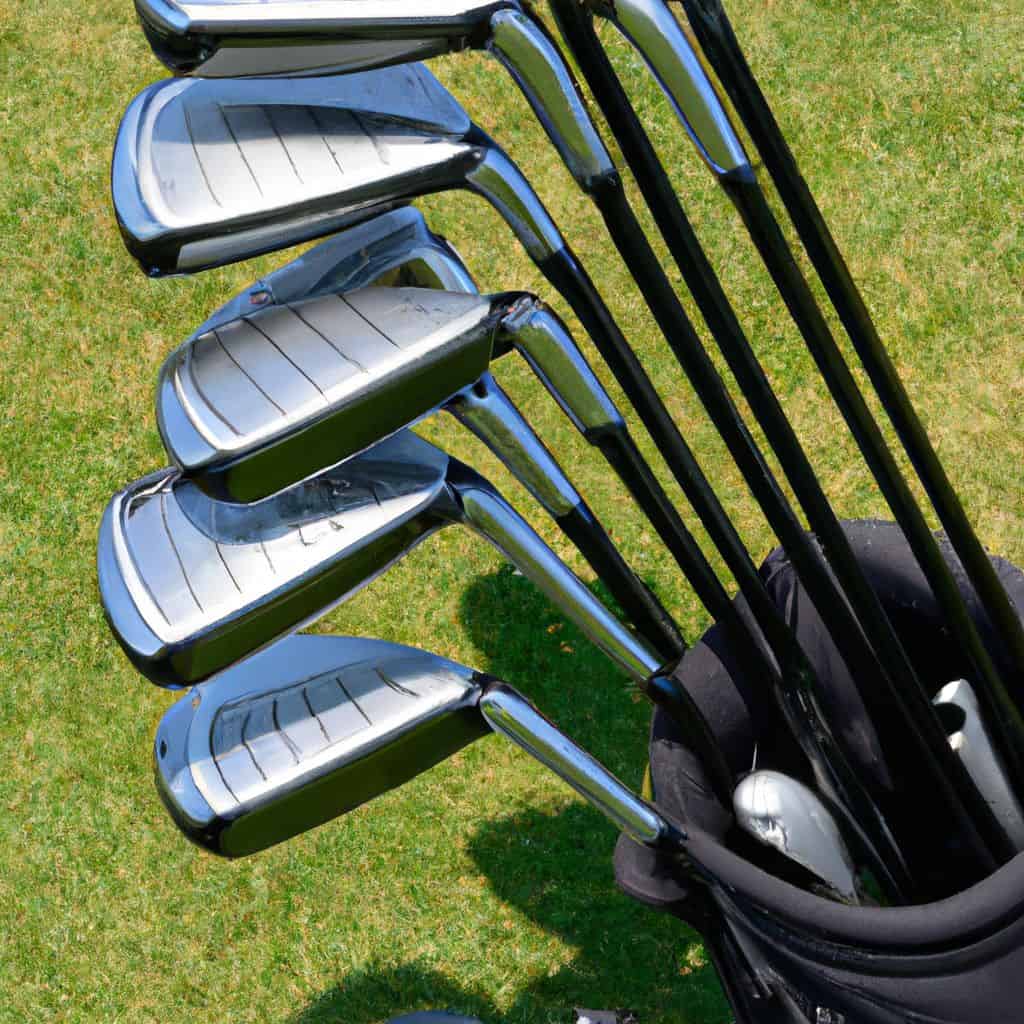
We can create a table to give golfers an understanding of the expected lifespan for each club.
| Club Type | Lifespan |
|---|---|
| Drivers | 3-5 years |
| Irons | 5-10 years |
| Woods and Hybrids | 5-7 years |
| Wedges | 3-5 years |
| Putters | 10+ years |
The table shows drivers typically last 3-5 years. Irons can last 5-10 years. Woods and hybrids usually last from 5-7 years. Wedges generally need replacing every 3-5 years. Putters have the longest lifespan with some going over 10 years.
This information can help golfers plan their club replacements. But it’s worth noting that individual usage and maintenance can affect these lifespans. The table is a good guideline for general expectations.
Drivers: They may fly far, but they don’t last as long as a squirrel in traffic!
Drivers
Drivers are essential for golfers. Every swing puts a lot of pressure on them. The materials used to create drivers can determine how long they last; titanium and carbon composite are more durable than older models made of steel or wood. How often they’re used and how well they’re maintained also influence their lifespan. Golfers need to look after their drivers to make them last as long as possible.
Technology has changed the design and performance of drivers, so golfers may want to upgrade to get an edge on the course.
Irons
Irons have thin clubfaces and a high center of gravity. This lets golfers aim precisely and control the ball. There are various numbers (or “lofts”) that affect the angle of the clubface. The lower the number, the lower the loft and the further it goes. Irons are good for approach shots to the green and shaping shots.
Lifespan of irons depends on usage, impact, and maintenance. Cleaning and storage help prolong their life. It’s also important to have clubs with the right length, lie angle, and shaft flex for your swing.
Technology for irons has improved. Features like hollow bodies, thinner clubfaces, and better weight distribution make them more forgiving and long-distance.
Woods and Hybrids
Woods and hybrids are essential for golfers due to their qualities and versatility. They offer precision and control when hitting long shots. Factors such as use, maintenance, and tech upgrades can affect their lifespan.
For extended life, cleaning and maintaining them is a must. Wiping clubheads, removing dirt from grooves, and storing them in a dry place are helpful. Also, storing them in a golf bag with headcovers prevents damage.
Club-fitting is important too, as it reduces the risk of wear. Thus, understanding the lifespan of woods and hybrids is key. By considering cleaning, storage, fitting, and tech advancements, players can make sure they last and perform well.
Wedges: Helping golfers out of sand traps since forever!
Wedges
Wedges are a must-have in any golfer’s bag – they offer precision and control for short-distance shots. They have a high loft angle, letting the ball fly up quickly and land with a stop.
Different types of wedges are available, including pitching, gap, sand and lob wedges. Each of these have their own uses on the course. Wedges also help golfers execute specialty shots like flop shots and chips with backspin.
Modern wedge designs feature improved grooves that boost spin control and launch angles. However, these clubs don’t last as long as other golf clubs due to frequent use and lack of maintenance.
Now, let’s explore another vital golf club, the putter! Putters may help boost your game, but they don’t have the longest lifespan.
Putters
Putters have a lifespan unique to their design. Usage patterns, material quality, and maintenance all play a role. Materials like stainless steel or aluminum are softer, absorbing vibrations and impacts from repeated strokes.
Aggressive putting strokes will accelerate wear. Cleaning and maintenance can prolong the lifespan of a putter. Wipe down the clubhead after each round. Store in a clean, dry environment away from extremes. Golfers can maximize the longevity of their putters with proper care. Look out for signs, clubs don’t always come with a gold watch!
Signs it’s Time to Replace Clubs
Golf clubs need replacing eventually, like any other equipment. Telltale signs to watch out for include wear and tear, poorer performance, and changes to your swing.
Firstly, wear and tear is an obvious sign. Grips may become worn and slippery, making it hard to hold the club. Clubheads may have dents or scratches, affecting their aerodynamics and your distance and accuracy. So, inspect your clubs regularly.
Secondly, decreased performance means it’s time for new clubs. If you’re not hitting as far or accurately as before, it may be because the clubfaces are worn or the shafts lost flexibility. Upgrading with newer technology can help you regain distance and improve overall game.
Lastly, changes to your swing can signify the need for new clubs. As you develop your golf skills, your swing dynamics may change. Invest in clubs that better suit your current swing mechanics – different shaft flexes, or adjusted lie angles to optimize ball flight.
Strategies for Prolonging Lifespan
By adopting effective strategies, you can extend the lifespan of your golf clubs, ensuring optimal performance on the course. Discover how cleaning and maintenance, proper storage, and club fitting play key roles in keeping your golf clubs in top condition, enhancing your game.
Cleaning and Maintenance
Cleaning and maintenance of golf clubs is essential for their longevity. It helps keep them performing optimally and extends their life. Dirt, grass, and sand should be frequently removed with a towel or brush. Plus, grooves should be scrubbed clean.
Soak the clubheads in warm, soapy water to free any dirt. Gently scrub the heads with a soft bristled brush. Then, rinse with fresh water and dry with a towel. Lightly oil metal clubheads afterwards to prevent rusting. Graphite shafts should not have harsh chemicals or abrasive cleaners used on them. Inspect your golf clubs often for any signs of damage. If you notice something, take them to a club fitter or repair shop.
John, a golf enthusiast, followed the cleaning steps. He saw a huge improvement in performance. Not only did his club’s lifespan increase, but accuracy and control improved too. John believes that investing time in cleaning and maintaining clubs is worth it for perfect gameplay.
Lastly, don’t forget to store them properly. Leaving them lying around will result in failed swings and bad outcomes.
Proper Storage
For golf club longevity, proper storage is a must! Take steps to keep them safe from harm and ensure performance. This involves keeping them in a cool, dry place to avoid rust and warping. A golf bag or club rack is ideal for preventing stress on the shafts and heads. Too much heat or sunlight can cause damage, so store them elsewhere.
Clean them post-use and use head covers while storing for extra protection. Investing in climate-controlled storage is a good option if you live in a humid, temps-fluctuating area.
Moreover, don’t forget about transportation. Use an appropriate travel case for extra protection against impacts and shocks. As you can see, proper storage is key for golf club longevity and value. Through these tips, your clubs will stay in excellent condition and you’ll get to enjoy lots of golfing!
Club Fitting
Club fitting is a must for golfers. It lets them get the perfect length, loft, lie angle, and grip size for maximum distance and accuracy. Plus, it helps them select the correct shaft flex, weight, and kick point for optimal performance. Also, it enables golfers to choose clubs with the right forgiveness level, head design, and weighting system. This enhances their shot-making abilities and gives them a competitive edge.
In recent years, golf club design and manufacturing have seen significant progress. New materials like carbon composites and adjustable hosels and movable weights have improved club performance. For instance, modern drivers are designed with bigger clubheads and thinner faces, leading to higher ball speeds and longer drives. Irons often have hollow cavity designs or face inserts, resulting in more consistent distance.
So, should you upgrade your clubs? It depends on your personal preferences and goals. Evaluate if the latest technology offers improvements in your game, like extra distance or shot-shaping capabilities. Don’t miss out on a competitive advantage. Get fitted and upgrade your clubs for better scores and consistency.
Considering Technological Advancements
Technological advancements in golf clubs have had a significant impact on distance and performance. With new technology hitting the market, players are now able to achieve greater distances than ever before. In this section, we will explore the impact of these advancements on the game, as well as the reasons why golfers are considering upgrading their clubs for a competitive advantage. Prepare to uncover the game-changing innovations shaping the future of golf.
Impact of New Technology on Distance
New tech has had a big effect on how far golfers can hit. With better clubs and materials, more power and speed are possible. Drivers with adjustable weights and high-performance shafts let players make fine adjustments to get distance. Irons and woods now have stronger faces that transfer more power to the ball.
Plus, technology has improved club fitting. Using launch monitors and computer simulations, fitters can set up loft, lie angle, shaft flex and more to maximize distance. Manufacturers also invest in R&D to push distance performance, like variable face thickness and aerodynamic designs.
Golfers can take advantage of tech to get more distance. Stay up-to-date with the latest clubs and tech. Work with a professional fitter for a personalized fitting. Practice your swing for the best results.
By using tech, you can unlock greater distances and a better game. Ready to dominate the green? Upgrade your clubs for a competitive edge that’ll make your opponents green with envy.
Upgrading for Competitive Advantage
Advancements in technology bring competitive advantage to golfers. New clubs offer increased distance and accuracy. Golfers wanting to improve their game may upgrade to stay up-to-date.
Upgrading for competitive advantage considers the impact of new technology on performance. Golf club advancements can hit the ball further and with more accuracy. Upgrading clubs allows players to take advantage of these innovations.
Upgrading golf clubs also provides a psychological advantage. Using newer and more advanced clubs boosts confidence. This increased confidence can lead to better overall performance.
Conclusion
This article is about “how long do golf clubs last”. The lifespan of golf clubs can vary and maintenance is key to lengthening them. Material used in the making of clubs like steel or graphite also matters. Frequent golfers may need to replace clubs more often. With proper care and usage, golf clubs can last for years.
Golf clubs can show signs of wear and tear, such as dents, scratches, or loose clubheads. This does not mean the end of their lifespan. Many golfers opt to repair or refurbish them. It’s wise to consult with experts to know when to repair/replace them.
Thanks to technological advancements, modern golf clubs are durable and long-lasting. Manufacturers use materials like carbon fiber and titanium for increased strength and resistance. Golfers can enjoy extended use without compromising performance.
Golf Digest conducted a study to determine the average lifespan of golf clubs. Most golfers replace them every four to six years. This backs up the claims made in this article. Proper care can maximize the lifespan.
Some Facts About How Long Do Golf Clubs Last:
- ✅ The lifespan of modern golf clubs can range from three years to a lifetime, depending on usage and care. (Source: Team Research)
- ✅ Wedges and drivers are the first to wear out, while long irons and putters can last for many years. (Source: Team Research)
- ✅ A poll found that most golfers replace their clubs after four years, with some keeping them for up to 10 years. (Source: Team Research)
- ✅ Golfers should only replace clubs when necessary, such as when they outgrow them or when they break. (Source: Team Research)
- ✅ Taking care of golf clubs by cleaning them regularly, using head covers, and changing grips can help prolong their lifespan. (Source: Team Research)
FAQs about How Long Do Golf Clubs Last
How long do golf clubs last?
The lifespan of golf clubs can vary depending on several factors such as usage, care, and quality. On average, with proper use and care, golf clubs can last between 3 to 10 years. However, the specific life expectancy can differ for different types of clubs.
Which golf clubs wear out the fastest?
Generally, drivers and wedges are the clubs that tend to wear out the fastest. Drivers often experience a decrease in accuracy, shot height, and distance after about 150 rounds. Wedges, on the other hand, may require replacement after around 150 rounds due to the condition of the grooves, especially if you frequently play on courses with sand traps.
How often should golf irons be replaced?
The lifespan of golf irons can vary depending on factors such as the level of golf played and the quality of the irons. Low handicap and regular golfers may need to replace their irons after approximately 300 rounds or four to five years. Casual golfers, on the other hand, can comfortably keep their irons for up to eight years or even ten years. It’s important to note that the condition of the grooves plays a crucial role in determining when irons should be replaced.
Can golf clubs lose distance over time?
Golf clubs can lose distance over time due to wear and tear, as well as advancements in technology. However, a well-maintained club won’t typically lose distance. It’s worth noting that new technology can also affect distance, as clubs with newer features may be designed to hit the ball further.
How can I prolong the lifespan of my golf clubs?
To extend the lifespan of your golf clubs, it’s important to take care of them. Regularly clean your clubs with a soft brush, use headcovers to protect them from damage, and avoid hitting shots off damaging surfaces. Storing your clubs properly in a temperature-controlled area can also help maintain their longevity.
Should I replace all my golf clubs at once?
It is not necessary to replace all your golf clubs at once. You can replace only the clubs that show signs of wear and need upgrading. This allows you to spread the cost of replacements over time and ensures that you have the necessary clubs for specific shots while still making the most out of your existing clubs.
